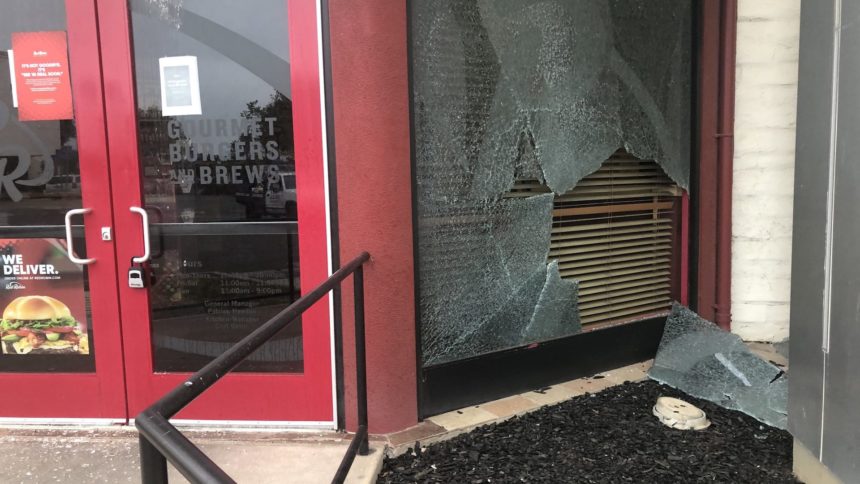Questions raised about police response to Santa Maria vandalism

SANTA MARIA, Calif. - Protestors in Santa Maria rallied against racial injustice and police brutality on Sunday, demanding justice for George Floyd and countless others who have been killed by law enforcement.
Daytime protests were large, vocal and peaceful. Hours after the initial demonstration and march ended, however, some vandalism and looting took place.
Santa Maria Police's response was rather quiet for most of the day, even as protests escalated later. A fire was set in the street at the corner of Cook and Broadway, and an American flag was torn down at City Hall. Others shot fireworks and broke into businesses at the Town Center Mall.
Only when looting attempts were reported did law enforcement respond in large numbers. Some believe Santa Maria Police should have responded sooner to prevent more damage from being done.
Allan Hancock College professor and former FBI special agent Dan Payne agrees.
“[Santa Maria Police are] supposed to protect the people and not endanger the people, which was happening last night,” he said. “They’re gonna have to get aggressive, they’re gonna have to have a police force out there.”
“By-and-large, the daylight protests are just civil disobedience,” Payne added. “People are trying to say, ‘We’re hurting. We’re trying to get this message out. Please listen to us.’ Then when night falls, evil falls, or comes out. And you see people out there that are hell-bent on destroying property, looting."
Many argue, however, that more aggressive police responses can lead to more violence. Others say it takes blocking traffic or other strategies that make the public uncomfortable in order to truly get a message across.
In Payne's opinion, however, there's a line that is being crossed: "Destruction of property and placing lives in danger."
Payne calls law enforcement's necessary mindset when responding to heated protests "mental gymnastics."
“You have to be able to think on your feet,” he said. “Freedom of speech and the freedom to gather are part of our First Amendment, but here again, you have to weigh that, or balance that, against the danger to the communities.”
Payne agrees with the protests' message that widespread change is needed in the United States.
“We have this underlying racial bias in this country,” he said. “We’re gonna have to—at all levels—from the churches, the schools, law enforcement, all levels—say, ‘Can’t we all get along?’”
